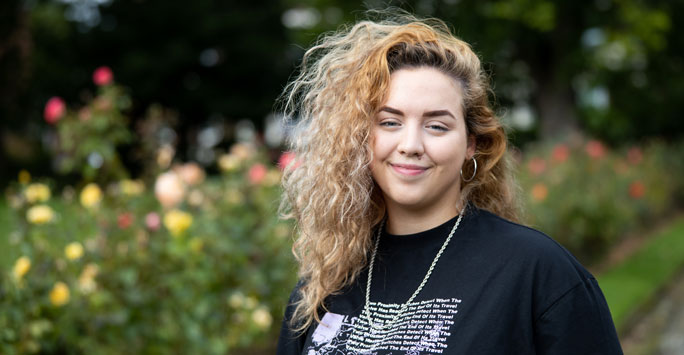Five ways to explore LGBT+ history from home
Posted on: 27 January 2021 by Imogen De Castro Gray in 2021 posts

For LGBT+ history month we asked Imogen, Deputy-President of the Guild, to collaborate with us on a list of media to watch and resources to explore.
From campaigning for equal rights at Pride in London, to the Harlem ballroom scene in New York, find out more about LGBT+ history here.
"My advice would be to learn about our heroes and read between history's lines. LGBTQ+ History isn’t taught, but LGBTQ+ people have always existed and have had as much impact in where we are today than anyone that is recognized in history books.
If you don’t know much, one of the best ways to learn more is through media. I would recommend the films ‘Pride’ and ‘The Imitation Game’ as well as the Netflix TV show ‘POSE’ as they are a great start to learn more.
Pride (Film, 2014)
Pride tells the real-life story of how a group of Lesbian and Gay people fundraised for Welsh miners during the miners' strike. They ended up forming a campaign group, raising money and supporting them during the strike. Even when the strike ended, the miners returned their support and actually led the 1985 Gay Pride March in London. Not long after this, the Labour party included LGB rights in their official manifesto, and as such, this unlikely friendship between a group of LGBTQ+ people and miners actually aided in the progression of changes to this country's legislation. It's also quite a funny film and something not many people know about.
The Imitation Game (Film, 2014)
The Imitation Game tells Alan Turing’s story. Alan Turing’s story is not told in our history books, but he was the man who cracked the Nazi Enigma code. If it weren’t for him, World War Two would have been far longer and thousands of more lives would have been lost. After finding out he was gay, he was chemically castrated and as a result, he took his own life. He deserves far more recognition for helping end the war.
Pose (Series, 2019-2020)
The TV show POSE is set in 1987 and brings New York’s Ballroom culture to life. Not only is it fabulous with fantastic cinematography and brilliantly casted but it tells the story of the AIDs crisis, the rejection faced by many young LGBTQ+ people and how members of the community take people in and form their own ‘houses’. It also tells the story of how LGBTQ+ culture started to become mainstream such as how Madonna’s hit song “Vogue” was inspired by the Harlem Ballroom scene.
Black LGBTQ+ History Project
I would also suggest checking out the Guild's Black LGBTQ+ History Project, which highlights untold stories and contributions of Black LGBTQ+ role models and heroes. There are also resources such as movies and books created by or representing Black LGBTQ+ people and a range of charities and organizations where you can learn more.
The history of Drag at the Guild
This February, the Guild will be providing an interactive resource about the history of Drag and will be telling the newly discovered story of William Dorsey Swann, a man born into slavery in the 1800s who is now known to be the world’s first recorded Drag Queen. You can find out about Swann’s story by visiting the Guild's channels, or a quick Google search."
Discover more
- Follow The Guild on Instagram for more details of their upcoming LGBT+ history events and resources
- Find out more about Imogen and her work on Instagram
- Our libraries' LGBT+ reading list
- Explore Liverpool's LGBT+ map
- Discover LGBT+ artefacts and stories at National Museums Liverpool.
More about studying history at Liverpool.